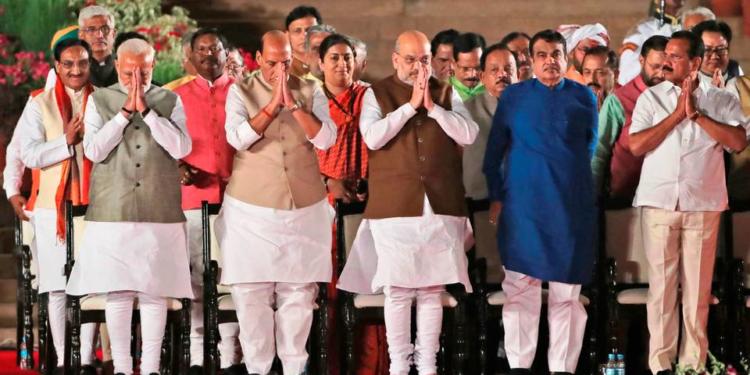Narendra Modi was sworn in as country’s Prime Minister for a second term yesterday. A total of 58 parliamentarians took oath and out of them, 25 got cabinet berths, 9 were given independent charge of ministries and 24 were appointed as ministers of state. The ministers were chosen from across the country with the state of Uttar Pradesh getting the highest share. One of the members of the cabinet, S. Jaishankar, who has been sworn in as the minister of external affairs is yet to become a member of parliament and would be nominated from Rajya Sabha within the next six months.

Uttar Pradesh, politically the most crucial state for any government with 80 Lok Sabha members and 31 Rajya Sabha members, got 10 ministerial berths in the Modi government 2.0. Out of the 111 parliamentary seats that UP has, NDA is placed on 75 seats (64 from Lok Sabha and 11 from Rajya Sabha) and PM Modi has now chosen 10 members from the state to be included in the ministry.
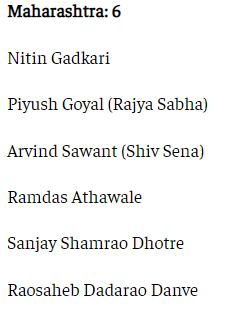
Maharashtra, the second largest state of the country in terms of population and number of seats, bagged the second largest share in Modi ministry. The state has 67 parliamentary seats (48 in Lok Sabha and 19 in Rajya Sabha) and NDA is placed on 50 of those seats. The state got 6 members in the Council of Ministers including three holding the cabinet rank. The state would also face assembly election by the end of this year and therefore the inclusion of leaders like Sanjay Shamrao Dhotre and Raosaheb Dadarao Danve who have strong regional presence was important.
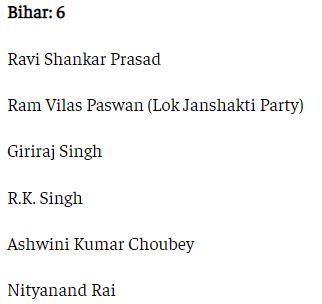
Bihar, the third most populous state of the country with 56 parliamentary seats (40 in Lok Sabha and 16 in Rajya Sabha) also got 6 berths in the ministry including 2 ministers holding the cabinet rank. NDA is placed on 47 seats (39 in Lok Sabha and 9 in Rajya Sabha) of the state. The state will go in for assembly polls in 2020 and BJP would like to repeat its spectacular general election performance.
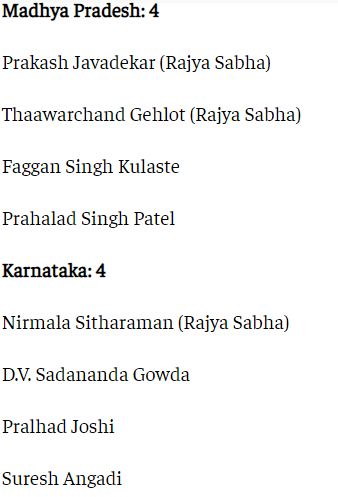
Madhya Pradesh, a state where BJP might topple the incumbent Congress government got four ministerial berths including 2 Rajya Sabha members, Prakash Javadekar and Thaawarchand Gehlot. BJP performed exceptionally well in the state and won 28 out of 29 seats. Karnataka, the only southern state with a significant BJP presence was also awarded 4 seats in the ministry.
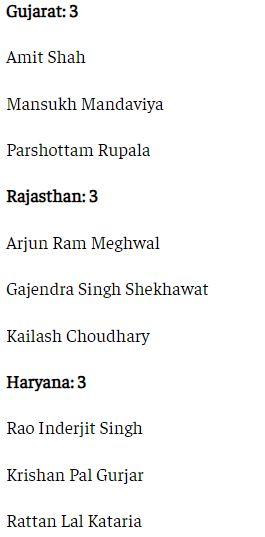
The states of Gujarat, Rajasthan, and Haryana where BJP made a clean sweep victory were awarded 3 ministerial berths each. In the state of Haryana, where BJP had a negligible presence 5 years ago, the party today is in power with a full majority.

In Bengal and Odisha, the states where BJP performed well in general elections for the first time since the inception of the party, two ministerial berths have been awarded. The party won 8 seats in Odisha out of 21 and 18 seats in West Bengal out of 42.
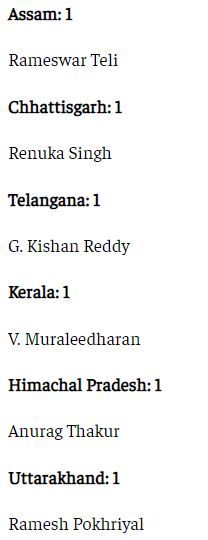
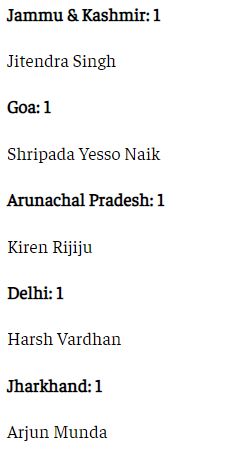
The states which were awarded 1 ministry seat each in the Modi government 2.0 are Assam, Chhattisgarh, Telangana, Kerala, Himachal Pradesh, Uttarakhand, Jammu & Kashmir, Goa, Arunachal Pradesh, Delhi and Jharkhand.
The ministry overall seems very balanced in terms of representation from the states. The party awarded ministerial berths to almost every state from where it won Lok Sabha seats and also awarded berths to ministers from some states on the basis of Rajya Sabha representation.


























